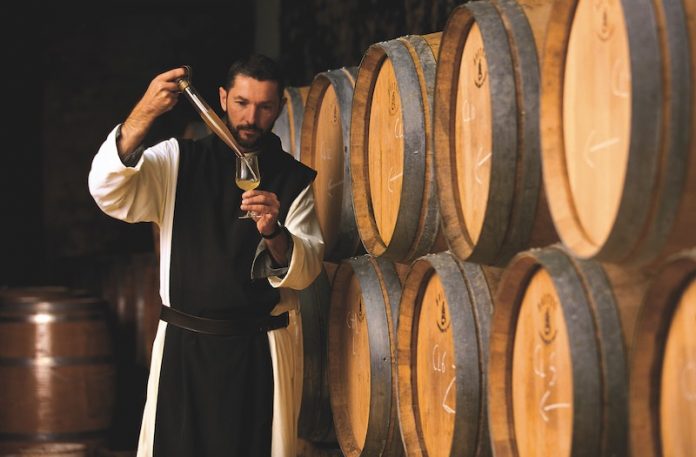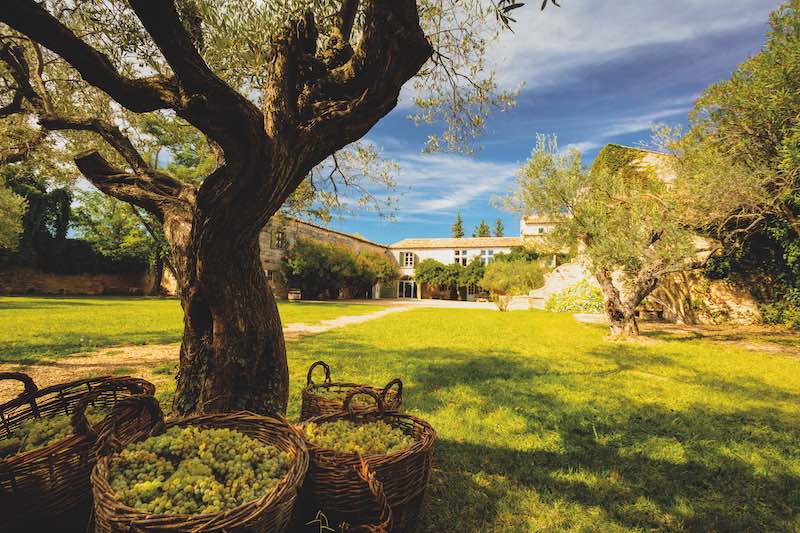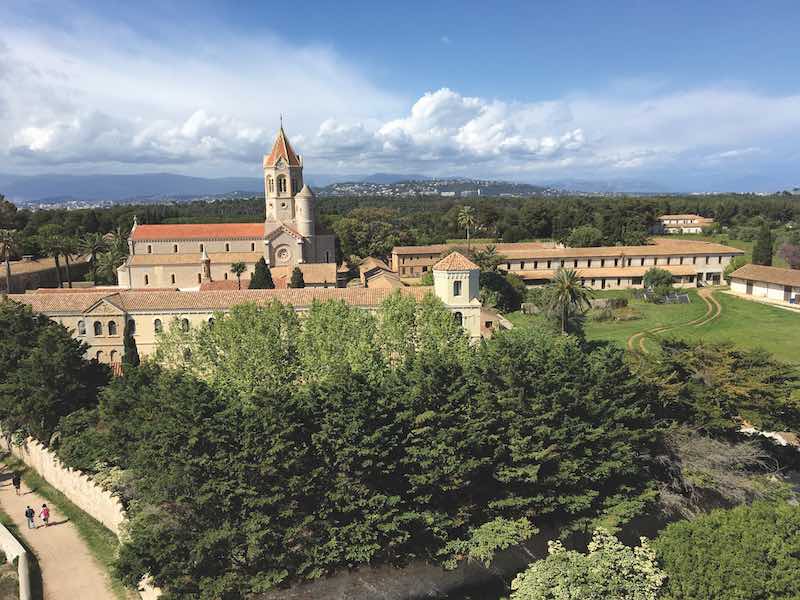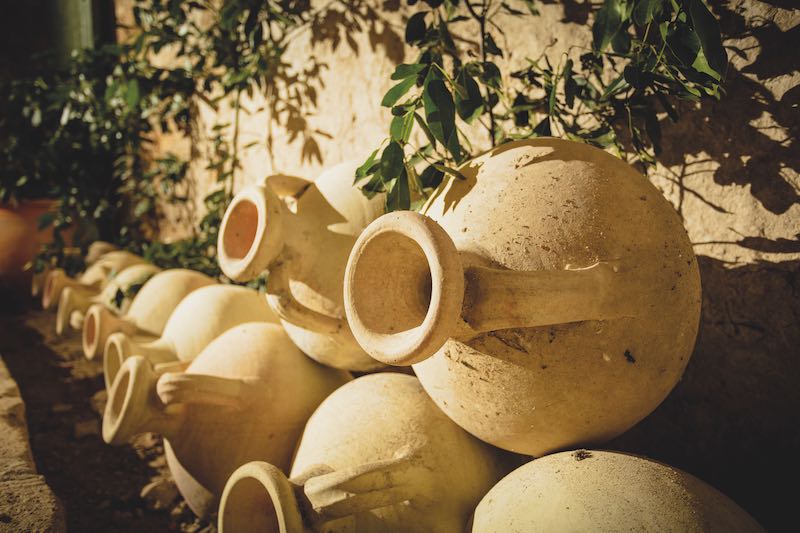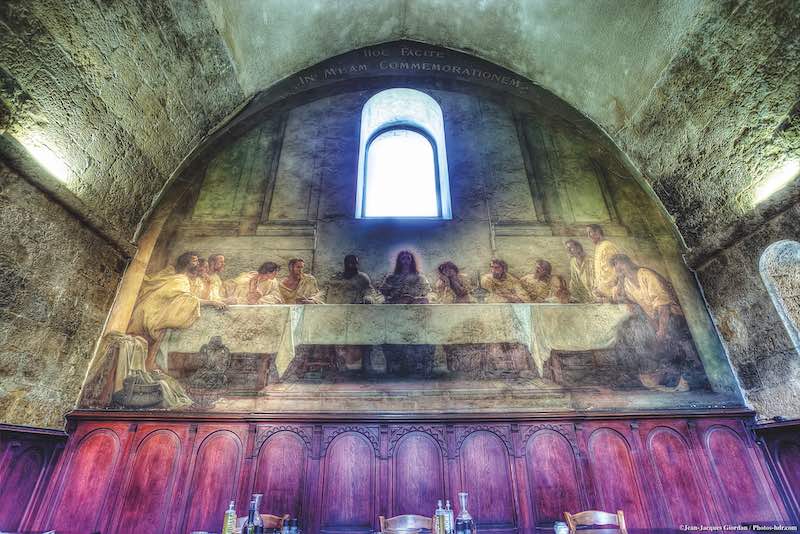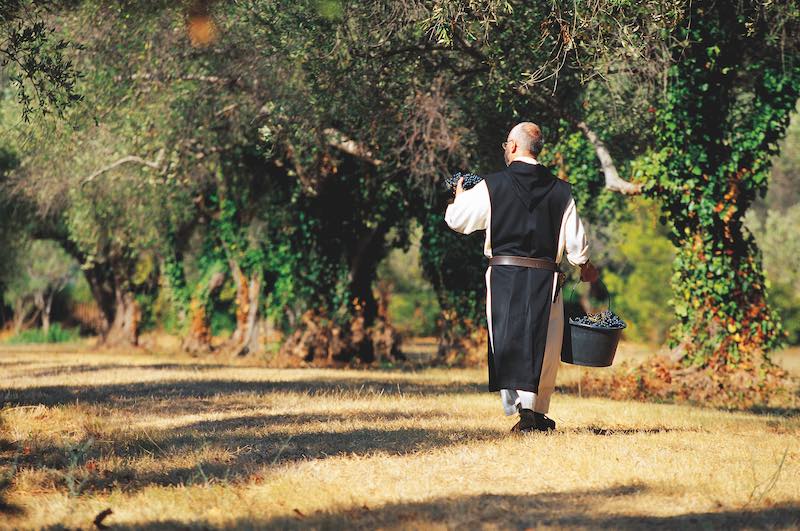Many of France’s great wines owe their success to the visionary techniques developed by religious orders more than a thousand years ago
France’s love affair with wine dates back to at least 600 years before Christianity – and probably well before that. But it was the Christian monastic orders’ development of the growing techniques still in use today that assured the flourishing of the great French wines. Chablis, Chassagne-Montrachet, Vosne-Romanée, PouillyFuissé, Châteauneuf-du-Pape, Pommard… What do these legendary appellations have in common? They were all established by monks. Delve a li ttle deeper into the history of wine in France and you’ll find that many of the great wines we drink today had their origins in a monastery.
It is true that we have the Greeks to thank for the introduction of the vine to Gaul and the Romans for its commoditisation throughout Europe and beyond. But the roots of modern French winemaking reach back to the year 360 AD and Martin of Tours, an ex-Roman soldier and the founder of the first monastery in France.
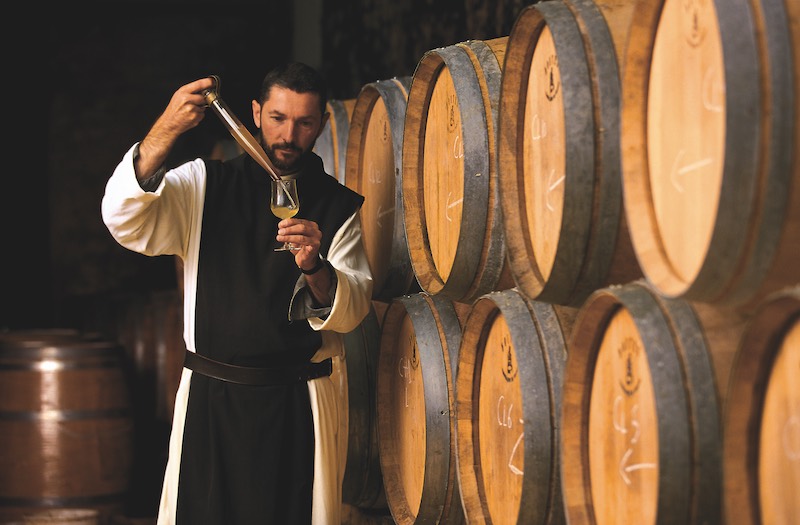
Saint Martin’s contributions include developing the Chenin Noir and Chenin Blanc grapes from the wild native grapes of the Touraine forest and planting the first Vouvray vineyards. The essential practice of pruning was also inadvertently discovered by Saint Martin, whose donkey, left untethered in a vineyard, devoured every vine above knee level. Instead of ruining the next year’s harvest, however, the wine produced from the truncated grapevines was the best that the monks had ever tasted.
Martin of Tours may have been the crucial link between Roman winemaking know-how and the medieval monastic world, ensuring that knowledge would last past the fall of the Roman Empire and through the terrors of the Dark Ages.
THE GOLDEN AGE
It was the Benedictine order that finally guaranteed the endurance of monasticism in France, and, in tandem, the flourishing of winemaking. Saint Benedict’s Rule set out a humane model for monastic life revolving around prayer, study and agricultural labour, which included tending vines and winemaking. During the waves of invasions, territorial wars and general chaos of the early Middle Ages, monks became the preservers of civilisation, steadfastly providing charity, education and hospitals in return for labour and land. Their holdings, especially vineyards, rivalled that of the nobility.
While wine was key in religious ceremonies, it was not cultivated only for liturgical purposes. In medieval times, vin was used as a disinfectant and, infused with tonic herbs, as a potent medicine. Much lower in alcohol than today’s wines, it was suitable as a daily drink for the monks. It could also turn a profit, as it quickly became the favourite drink of the nobility.
As the monks acquired more land and planted more vines, their vinification techniques evolved. Very early on, wines from different regions were recognised for their specific characteristics, and parcels within a single domaine – climats – were appreciated for the subtle differences in the resulting vintage. For 500 years the Benedictines dominated the wines of virtually every modern-day appellation in France: Champagne, Burgundy, the Loire, Bordeaux, even in and around Paris and as far south as Bandol on the Mediterranean coast.
A NEW ORDER
By the 11th century, the Benedictines, now 1,200 monasteries strong in France, had grown wealthy from land holdings, agriculture and indulgences from rich aristocrats, adding pomp, opulent vestments and gorgeous churches to their vast lands. In protest at the order’s departure from its original simplicity, a reform movement arose, creating a split between the Benedictines and the new Cistercians.
In rejection of the Benedictines’ laxity, the early Cistercians adopted a strict asceticism that embraced fasting, solitude and a punishing schedule of work and prayer. So gruelling was the lifestyle that a Cistercian’s average life expectancy was just 28 years.
The upside of Cistercian discipline and its emphasis on manual labour extended to the vineyards, and in a relatively short time the order surpassed the Benedictines as winemakers. In France, the Cistercians are credited as the developers of the glorious Chardonnays which to this day are still considered the greatest whites in the world.
Scores of France’s notable Bourgogne appellations were started by monks, as well as dozens of the great Bordeaux, and many still carry the names of the monasteries that thrived for centuries until the French Revolution. By far the most famous is Champagne Dom Pérignon, named after the 17th-century Benedictine monk who did not, as some legends say, create the first sparkling Champagne, but did develop the cork, the most momentous innovation in the history of wine, as it allowed wines to be aged in the bottle.
DISTILLED SPIRITS
As monasteries were busy perfecting their wines, they were also experimenting with distillation. Mystery and magic still surrounded this process, which was invented by Egyptian alchemists between the 4th and 8th centuries. Its association with alchemy – tantamount to witchcraft in the late Middle Ages – may be what kept distillation, used solely for making medicines, from becoming more widespread in Europe right up until the 1600s.
In about 1600, a much-guarded manuscript containing a secret recipe for an elixir of life was offered to the Carthusian brothers of Vauvert in Paris. Try as they may, they could not replicate the drink and the recipe was locked away and forgotten for the next 125 years. In the early 1700s, the brothers rediscovered the recipe and gave it to their counterparts in the Chartreuse mountains, where alpine herbs were plentiful. The brothers spent the next 26 years experimenting until they finally succeeded in creating the 142-proof Elixir Végétal de la Grande Chartreuse. Today, the famous liqueur has been tamed to a gentle 110 proof, and the yellow version, created in 1842, a mild 86 proof.
Even now, the liqueur is a strictly guarded secret known to only three brothers at a time. It is still made from the original base of 130 herbs in a secret room at the heart of the monastery.
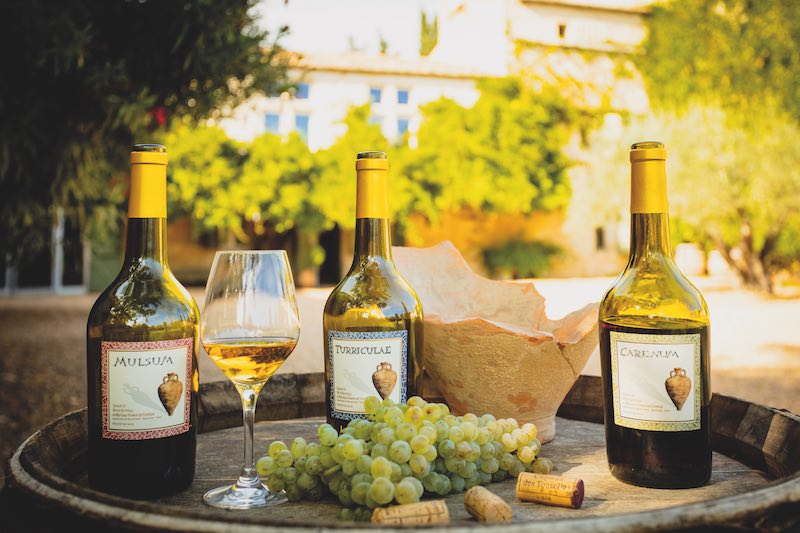
GRACING THE TOP TABLES
Today, there are only four monasteries in France making wine and one making spirits. The only monastic wine that aspires to international status – and that you’ll find outside monastery stores – comes from the Île Saint-Honorat, one of the two jewel-like Îles Lérins, a 15-minute ferry ride from Cannes.
The 20 monks of the Abbaye de Lérins Cistercian brotherhood may shun the spotlight, but their highly-prized organic wines and beautiful 20-acre vineyard are a big draw. To sample these nectars, the Lérina boutique, a few steps from the port landing, offers tastings of the monks’ seven vintages, including Saint Salonius (€95), made from 100 per cent Pinot Noir, which is o ften served to the jury of the Cannes Film Festival and is a staple on Paris state dinner menus. The monks also make several liqueurs from top-secret recipes, including the aromatic Lérina, made with 44 herbs and seeds, and sunny Lérincello, made from the famous lemons of Menton.
THE LAST OF THE NUNS
The last winemaking nuns in France welcome visitors to their graceful sun-drenched abbey, Notre-Dame de Fidélité, in the small Provençal village of Jouques, about 16 miles from Aix-en-Provence. When the 15 sisters of this Benedictine order arrived from Paris in 1967 to found a monastery, they decided to cultivate the property’s 10 acres of fallow vineyards. A few years later, with help from village winemakers, the nuns produced their first wines, and in 2016 were granted the protected designation of “Origine Coteaux d’Aix” in recognition of the quality of their terroir.
Today, the 40 sisters, aged between 27 and 82, also produce jams and honey, almonds, olive oil, essential oils and soaps from their own gardens, hives, olive groves and lavender fields, all found in monastery stores throughout France and in their online boutique. Their simple, wholesome way of life, their wines and the foods they prepare from the bounty of their own gardens are commemorated in an illustrated recipe book called Invitation à l’Abbaye.
FINE ROMAN WINES
If you’re wondering how a 1st-century wine might have tasted, head to Mas des Tourelles in the heart of Roman Provence. The vineyard, which has been in the Durand family since 1762, is the site of a unique experiment in partnership with France’s prestigious CNRS (Centre National de la Recherche Scientifique).
After the remains of a Gallo-Roman wine estate, complete with kilns, amphorae and other telltale signs, were discovered on the property, a unique project was born: to reconstruct a Roman vineyard, wine cellar and press in order to produce wines as faithful to their ancient antecedents as possible. The scheme aims to recreate not only the precise environment and working conditions but even the taste of the wine itself.
Three wines – Mulsum, Turriculae, Appius – replicate recipes passed down through the works of Pliny the Elder, Lucius Columella and Palladius, with ingredients such as seawater, fenugreek and rhizome of iris added to the cépage.
This comes courtesy of Taste of France Issue Two. For more great recipes, food news and interviews with top chefs, buy your copy here!

